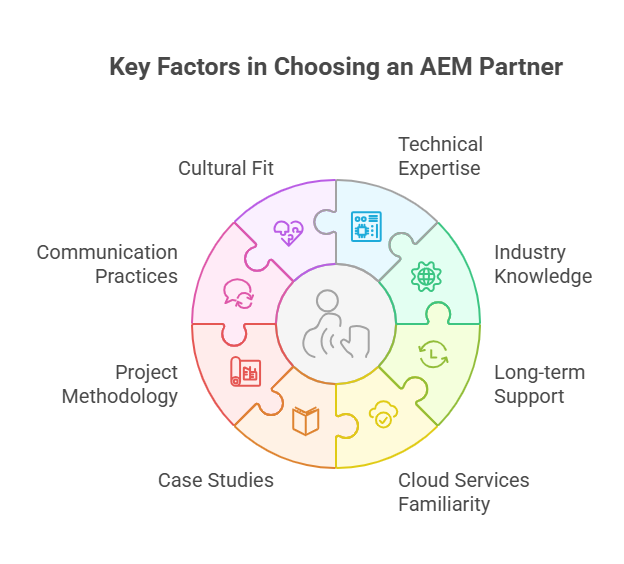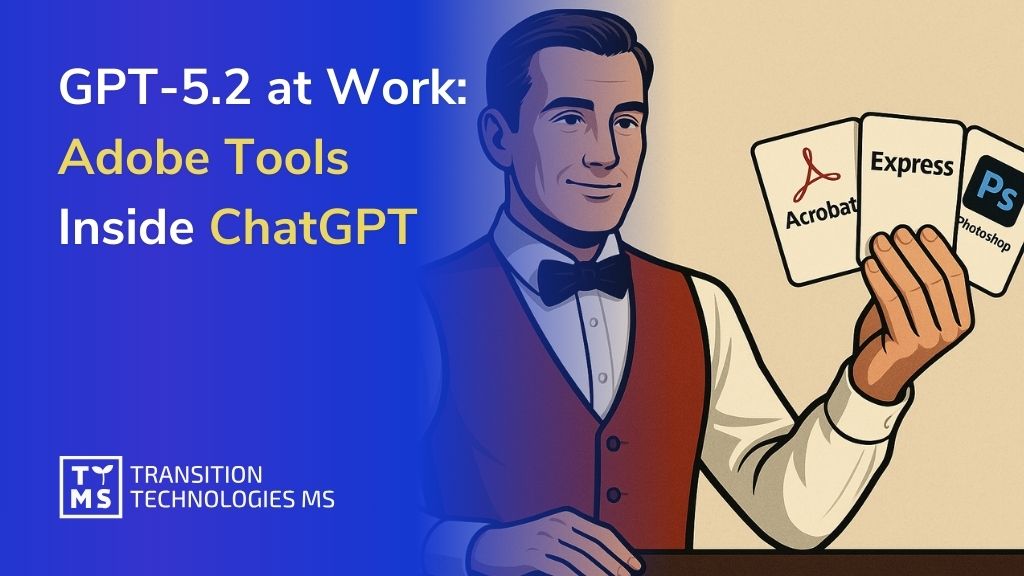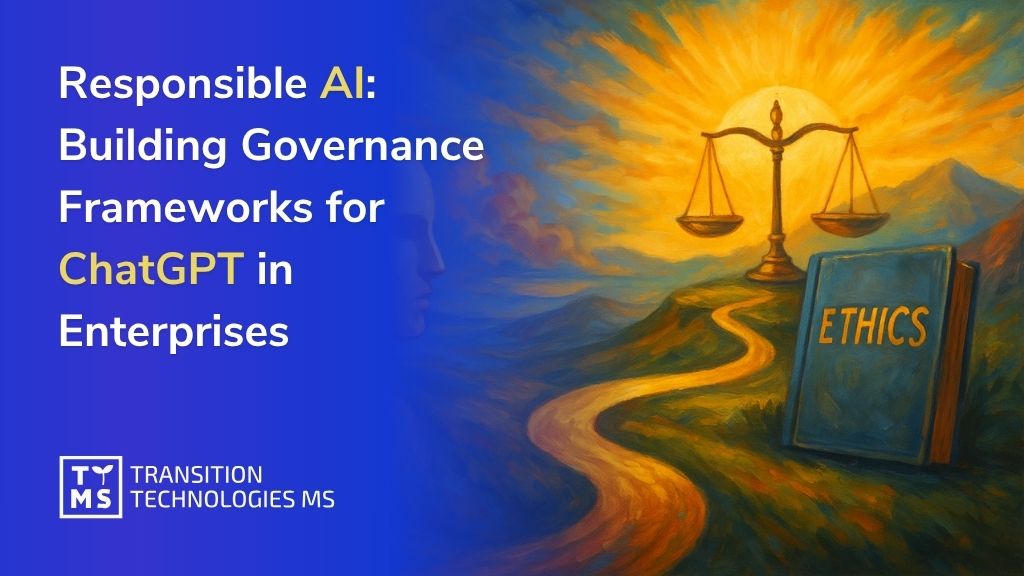As artificial intelligence becomes integral to business operations, companies are increasingly focused on responsible AI – ensuring AI systems are ethical, transparent, and accountable. The rapid adoption of generative AI tools like ChatGPT has raised new challenges in the enterprise. Employees can now use AI chatbots to draft content or analyze data, but without proper oversight this can lead to serious issues. In one high-profile case, a leading tech company banned staff from using ChatGPT after sensitive source code was inadvertently leaked through the chatbot. Incidents like this highlight why businesses need robust AI governance frameworks. By establishing clear policies, audit trails, and ethical guidelines, enterprises can harness AI’s benefits while mitigating risks. This article explores how organizations can build governance frameworks for AI (especially large language models like ChatGPT) – covering new standards for auditing and documentation, the rise of AI ethics boards, practical steps, and FAQs for business leaders.
1. What Is an AI Governance Framework?
AI governance refers to the standards, processes, and guardrails that ensure AI is used responsibly and in alignment with organizational values. In essence, a governance framework lays out how an organization will manage the risks and ethics of AI systems throughout their lifecycle. This includes policies on data usage, model development, deployment, and ongoing monitoring. AI governance often overlaps with data governance – for example, ensuring training data is high-quality, unbiased, and handled in compliance with privacy laws. A well-defined AI governance framework provides a blueprint so that AI initiatives are fair, transparent, and accountable by design. In practice, this means setting principles (like fairness, privacy, and reliability), defining roles and responsibilities for oversight, and putting in place processes to document and audit AI systems. By having such a framework, enterprises create trustworthy AI systems that both users and stakeholders can rely on.
2. Why Do Enterprises Need Governance for ChatGPT?
Deploying AI tools like ChatGPT in a business without governance is risky. Generative AI models are powerful but unpredictable – for instance, ChatGPT can produce incorrect or biased answers (hallucinations) that sound convincing. While a wrong answer in a casual context may be harmless, in a business setting it could mislead decision-makers or customers. Moreover, if employees unwittingly feed confidential data into ChatGPT, that information might be stored externally, posing security and compliance risks. This is why major banks and tech firms have restricted use of ChatGPT until proper policies are in place. Beyond content accuracy and data leaks, there are broader concerns: ethical bias, lack of transparency in AI decisions, and potential violation of regulations. Without governance, an enterprise might deploy AI that inadvertently discriminates (e.g. in hiring or lending decisions) or runs afoul of laws like GDPR. The costs of AI failures can be severe – from legal penalties to reputational damage.
On the positive side, implementing a responsible AI governance framework significantly lowers these risks. It enables companies to identify and fix issues like bias or security vulnerabilities early. For example, governance measures like regular fairness audits help reduce the chance of discriminatory outcomes. Security reviews and data safeguards ensure AI systems don’t expose sensitive information. Proper documentation and testing increase the transparency of AI, so it’s not a “black box” – this builds trust with users and regulators. Clearly defining accountability (who is responsible for the AI’s decisions and oversight) means that if something does go wrong, the organization can respond swiftly and stay compliant with laws. In short, governance is not about stifling innovation – it’s about enabling safe and effective use of AI. By setting ground rules, companies can confidently embrace tools like ChatGPT to boost productivity, knowing there are checks in place to prevent mishaps and ensure AI usage aligns with business values and policies.
3. Key Components of a Responsible AI Governance Framework
Building an AI governance framework from scratch may seem daunting, but it helps to break it into key components. According to industry best practices, a robust framework should include several fundamental elements:
Guiding Principles: Start by defining the core values that will guide AI use – for example, fairness, transparency, privacy, security, and accountability. These principles set the ethical north star for all AI projects, ensuring they align with both company values and societal expectations.
Governance Structure & Roles: Establish a clear organizational structure for AI oversight. This could mean assigning an AI governance committee or an AI ethics board (more on this later), as well as defining roles like a data steward, model owner, or even a Chief AI Ethics Officer. Clearly designated responsibilities ensure that oversight is built into every stage of the AI lifecycle. For instance, who must review a model before deployment? Who handles incident response if the AI misbehaves? Governance structures formalize the answers.
Risk Assessment Protocols: Integrate risk management into your AI development process. This involves conducting regular evaluations for potential issues such as bias, privacy impact, security vulnerabilities, and legal compliance. Tools like bias testing suites and AI impact assessments can be used to scan for problems. The framework should outline when to perform these assessments (e.g. before deployment, and periodically thereafter) and how to mitigate any risks found. By systematically assessing risk, organizations reduce exposure to harmful outcomes or regulatory violations.
Documentation and Traceability: A cornerstone of responsible AI is thorough documentation. For each AI system (including models like ChatGPT that you deploy or integrate), maintain records of its purpose, design, training data, and known limitations. Documenting data sources and model decisions creates an audit trail that supports accountability and explainability. Many companies are adopting Model Cards and Data Sheets as standard documentation formats to capture this information. Comprehensive documentation makes it possible to trace outputs back through the system’s logic, which is invaluable for debugging issues, conducting audits, or explaining AI decisions to stakeholders.
Monitoring and Human Oversight: Governance doesn’t stop once the AI is deployed – continuous monitoring is essential. Define performance metrics and alert thresholds for your AI systems, and monitor them in real time for signs of model drift or anomalous outputs. Incorporate human-in-the-loop controls, especially for high-stakes use cases. This means humans should be able to review or override AI decisions when necessary. For example, if a generative AI system like ChatGPT is drafting content for customers, human review might be required for sensitive communications. Ongoing monitoring ensures that if the AI starts to behave unexpectedly or performance degrades, it can be corrected promptly.
Training and Awareness: Even the best AI policies can fail if employees aren’t aware of them. A governance framework should include staff training on AI usage guidelines and ethics. Educate employees about what data is permissible to input into tools like ChatGPT (to prevent leaks) and how to interpret AI outputs critically rather than blindly trusting them. Building an internal culture of responsible AI use is just as important as the technical controls.
External Transparency and Engagement: Leading organizations go one step further by being transparent about their AI practices to the outside world. This might involve publishing an AI usage policy or ethics statement publicly, or sharing information about how AI models are tested and monitored. Engaging with external stakeholders – be it customers, regulators, or the public – fosters trust. For example, if your company uses AI to make hiring or lending decisions, explaining how you mitigate bias and ensure fairness can reassure the public and preempt concerns. In some cases, inviting external audits or participating in industry initiatives for AI ethics can demonstrate a commitment to responsible AI.
These components work together to form a comprehensive governance framework. Guiding principles influence policies; governance structures enforce those policies; risk assessments and documentation provide insight and accountability; and monitoring with human oversight closes the loop by catching issues in real time. When tailored to an organization’s specific context, this framework becomes a powerful tool to manage AI in a safe, ethical, and effective manner.
4. Emerging Standards for AI Auditing and Documentation
Because AI technology is evolving so quickly, standards bodies and regulators around the world have been racing to establish guidelines for trustworthy AI. Enterprises building their governance frameworks should be aware of several key standards and best practices that have emerged for auditing, transparency, and risk management:
NIST AI Risk Management Framework (AI RMF): In early 2023, the U.S. National Institute of Standards and Technology released a comprehensive AI risk management framework. This voluntary framework has been widely adopted as a blueprint for identifying and managing AI risks. It outlines functions like Govern, Map, Measure, and Manage to help organizations structure their approach to AI risk. Notably, NIST added a Generative AI Profile in 2024 to specifically address risks from AI like ChatGPT. Enterprises can use the NIST framework as a toolkit for auditing their AI systems: ensuring they have governance processes, understanding the context and risks of each AI application (Map), measuring performance and trustworthiness, and managing risks through controls and oversight.
ISO/IEC 42001:2023 (AI Management System Standard): Published in late 2023, ISO/IEC 42001 is the world’s first international standard for AI management systems. Think of it as an ISO quality management standard but specifically for AI governance. Organizations can choose to become certified against ISO 42001 to demonstrate they have a formal AI governance program in place. The standard follows a Plan-Do-Check-Act cycle, requiring companies to define the scope of their AI systems, identify risks and objectives, implement governance controls, monitor performance, and continuously improve. While compliance is voluntary, ISO 42001 provides a structured audit framework that aligns with global best practices and can be very useful for enterprises operating in regulated industries or across multiple countries.
Model Cards and Data Sheets for Transparency: In the AI field, two influential documentation practices have gained traction – Model Cards (introduced by Google) and Data Sheets for datasets. These are essentially standardized report templates that accompany AI models and datasets. A Model Card documents an AI model’s intended use, performance metrics (including accuracy and bias measures), and limitations or ethical considerations. Data Sheets do the same for datasets, noting how the data was collected, what it contains, and any biases or quality issues. Many organizations now prepare model cards for their AI systems as part of governance. This improves transparency and makes internal and external audits easier. By reviewing a model card, for instance, an auditor (or an AI ethics board) can quickly understand if the model was tested for fairness or if there are scenarios where it should not be used. In fact, these documentation practices are increasingly seen as required steps for responsible AI deployment, helping teams communicate appropriate use and avoid unintended harm.
Algorithmic Audits: Beyond self-assessments, there is a growing movement towards independent algorithmic audits. These are audits (often by third-party experts or audit firms) that evaluate an AI system’s compliance with certain standards or its impact on fairness, privacy, etc. For example, New York City recently mandated annual bias audits for AI-driven hiring tools used by employers. Similarly, the EU’s upcoming AI regulations would require conformity assessments (a form of audit and documentation process) for “high-risk” AI systems before they can be deployed. Enterprises should anticipate that external audits might become a norm for sensitive AI applications – and proactively build auditability into their systems. Governance frameworks that emphasize documentation, traceability, and testing make such audits much easier to pass.
EU AI Act and Regulatory Compliance: The European Union’s AI Act, finalized in 2024, is poised to be one of the first major regulations on artificial intelligence. It will enforce strict rules for high-risk AI systems (e.g. AI in healthcare, finance, HR) – including requirements for risk assessment, transparency, human oversight, data quality, and more. Companies selling or using AI in the EU will need to maintain detailed technical documentation and logs, and possibly undergo audits or certification for high-risk systems. Even outside the EU, this law is influencing global standards. Other jurisdictions are considering similar regulations, and at a minimum, laws like GDPR already impact AI (regulating personal data use and giving individuals rights around automated decisions). For enterprises, the takeaway is that regulatory compliance should be built into AI governance from the start. By aligning with frameworks like NIST and ISO 42001 now, companies can position themselves to meet these legal requirements. The bottom line is that new standards for AI ethics and governance are becoming part of doing business – and forward-looking companies are adopting them not just to avoid penalties, but to gain competitive advantage through trust and reliability.
5. Establishing AI Ethics Boards in Large Organizations
One notable trend in responsible AI is the creation of AI ethics boards (or councils or committees) within organizations. These are interdisciplinary groups tasked with providing oversight, guidance, and accountability for AI initiatives. An AI ethics board typically reviews proposed AI projects, advises on ethical dilemmas, and ensures the company’s AI usage aligns with its stated principles and societal values. For enterprises ramping up their AI adoption, forming such a board can be a powerful governance measure – but it must be done thoughtfully to be effective.
Several high-profile tech companies have experimented with AI ethics boards. For example, Microsoft established an internal committee called AETHER (AI Ethics and Effects in Engineering and Research) to advise leadership on AI innovation challenges. DeepMind (Google’s AI research arm) set up an Institutional Review Committee to oversee sensitive projects (and it notably deliberated on the ethics of releasing the AlphaFold AI). Even Meta (Facebook) created an Oversight Board, though that one primarily focuses on content decisions. These examples show that ethics boards can play a practical role in guiding AI development.
However, there have also been well-publicized failures of AI ethics boards. Google in 2019 convened an external AI advisory council (ATEAC) but had to disband it after just one week due to controversy over appointed members and internal protest. Another case is Axon (a tech company selling law enforcement tools) which had an AI ethics panel; it dissolved after the company pursued a project (AI-equipped taser drones) that the majority of its ethics advisors vehemently opposed. These setbacks illustrate that an ethics board without the right structure or organizational buy-in can become ineffective or even a PR liability.
So, how can a company design an AI ethics board that truly adds value? Research suggests a few critical design choices to consider:
Purpose and Scope: Be clear about what responsibilities the board will have. Will it be an advisory body making recommendations, or will it have decision-making power (e.g. veto rights on deploying certain AI systems)? Defining the scope – whether it covers all AI projects or just high-risk ones – is fundamental.
Authority and Structure: Decide on the board’s legal or organizational structure. Is it an internal committee reporting to the C-suite or board of directors? Or an external advisory council comprised of outside experts? Some companies opt for external members to gain independent perspectives, while others keep it internal for more control. In either case, the ethics board should have a direct line to senior leadership to ensure its concerns are heard and acted upon.
Membership: Choose members with diverse backgrounds. AI ethics issues span technology, law, ethics, business strategy, and public policy. A mix of experts – data scientists, ethicists, legal/compliance officers, business leaders, possibly customer representatives or academic advisors – leads to more well-rounded discussions. Diversity in gender, ethnicity, and cultural background is also crucial to avoid groupthink. The number of members is another consideration (too large can be unwieldy, too small might lack perspectives).
Processes and Decision Making: Outline how the board will operate. How often does it meet? How will it evaluate AI projects – is there a checklist or framework it follows (perhaps aligned with the company’s AI principles)? How are decisions made – consensus, majority vote, or does it simply advise and leave final calls to executives? Importantly, the company must determine whether the board’s recommendations are binding or not. Granting an ethics board some teeth (even if just moral authority) can empower it to influence outcomes. If it’s purely for show, knowledgeable stakeholders (and employees) will quickly notice.
Resources and Integration: To be effective, an ethics board needs access to information and resources. This might include briefings from engineering teams, budgets to consult external experts or commission audits, and training on the latest AI issues. The board’s recommendations should be integrated into the product development lifecycle – for example, requiring ethics review sign-off before launching a new AI-driven feature. Microsoft’s internal committee, for instance, has working groups that include engineers to dig into specific issues and help implement guidance. The board should not operate in isolation, but rather be embedded in the organization’s AI governance workflow.
When done right, an AI ethics board adds a layer of accountability that complements other governance efforts. It signals to everyone – from employees to customers and regulators – that the company takes AI ethics seriously. It can also preempt problems by providing thoughtful scrutiny of AI plans before they go live. However, companies should avoid using ethics boards as a fig leaf. The board must have a genuine mandate and the company must be prepared to sometimes slow down or alter AI projects based on the board’s input. In fast-paced AI innovation environments, that can require a culture shift – valuing long-term trust and safety over short-term speed.
For large organizations, especially those deploying AI in sensitive areas, establishing an ethics board or similar oversight body is quickly becoming a best practice. It’s an investment in sustainable and responsible AI adoption.
6. Implementing AI Governance: Practical Steps for Enterprises
With the concepts covered above, how should a business get started with building its AI governance framework? Below are practical steps and tips for implementing responsible AI governance in an enterprise setting:
Define Your AI Principles and Policies: Begin by articulating a set of Responsible AI Principles for your organization. These might mirror industry norms (e.g., Microsoft’s principles of fairness, reliability & safety, privacy & security, inclusiveness, transparency, and accountability) or be tailored to your company’s mission. From these principles, develop concrete policies that will govern AI use. For example, a policy might state that all AI models affecting customers must be tested for bias, or that employees must not input confidential data into public AI tools. Clearly communicate these policies across the organization and have leadership formally endorse them, setting the tone from the top.
Inventory and Assess AI Uses: It’s hard to govern what you don’t know exists. Take stock of all the AI and machine learning systems currently in use or in development in your enterprise. This includes obvious projects (like an internal GPT-4 chatbot for customer service) and less obvious uses (like an algorithm a team built in Excel, or a third-party AI service used by HR). For each, evaluate the risk level: How critical is its function? Does it handle personal or sensitive data? Could its output significantly impact individuals or the business? This AI inventory and risk assessment helps prioritize where to focus governance efforts. High-risk applications should get the most stringent oversight, possibly requiring approval from an AI governance committee before deployment.
Establish Governance Bodies and Roles: Set up the structures to oversee AI. Depending on your organization’s size and needs, this could be an AI governance committee that meets periodically or a full-fledged AI ethics board as discussed earlier. Ensure that there is an executive sponsor (e.g., Chief Data Officer or General Counsel) and representation from key departments like IT, security, compliance, and business units using AI. Define escalation paths – e.g., if an AI system generates a concerning result, who should employees report it to? Some companies also appoint AI champions or ethics leads within individual teams to liaise with the central governance body. The goal is to create a network of responsibility. Everyone knows that AI projects aren’t wild-west skunkworks; they are subject to oversight and must be documented and reviewed according to the governance framework.
Integrate Testing, Audits, and Documentation into Workflow: Make responsible AI part of the development process. For any new AI system, require the team to perform certain checks (bias tests, robustness tests, privacy impact assessments) and produce documentation (like a mini model card or design document). Instituting AI project templates can be helpful – for instance, a checklist that every AI product manager fills out covering what data was used, how the model was validated, what ethical risks were considered, etc. This not only enforces good practices but also generates the documentation needed for compliance and future audits. Consider scheduling independent audits for critical systems – this might involve an internal audit team or an external consultant evaluating the AI system against criteria like fairness or security. By baking these steps into your development lifecycle (e.g., as stage gates before production deployment), you ensure AI governance isn’t an afterthought but a built-in quality process.
Provide Training and Support: Equip your workforce with the knowledge to use AI responsibly. Conduct training sessions on the do’s and don’ts of using tools like ChatGPT at work. For example, explain what counts as sensitive data that should never be shared with an external AI service. Teach developers about secure AI coding practices and how to interpret fairness metrics. Non-technical staff also need guidance on how to question AI outcomes – e.g., a recruiter using an AI shortlist should still apply human judgment and be alert to possible bias. Consider creating an internal knowledge hub or Slack channel on AI governance where employees can ask questions or report issues. When people are well-informed, they’re less likely to make naive mistakes that violate governance policies.
Monitor, Learn, and Evolve: Implementing AI governance is not a one-time project but an ongoing program. Establish metrics for your governance efforts themselves – such as how many AI systems have completed bias testing, or how often AI incidents occur and how quickly they are resolved. Review these with your governance committee periodically. Encourage a feedback loop: when something goes wrong (say an AI bug causes an error or a near-miss on compliance), analyze it and update your processes to prevent recurrence. Keep abreast of external developments too. For instance, if a new law gets passed or a new standard (like an updated NIST framework) is released, incorporate those requirements. Many organizations choose to do an annual review of their AI governance framework, treating it similarly to how they update other corporate policies. The field of AI is fast-moving, so governance must adapt in tandem.
By following these steps, enterprises can move from abstract principles to concrete actions in managing AI. Start small if needed – perhaps pilot the governance framework on one or two AI projects to refine your approach. The key is to foster a company-wide mindset that AI accountability is everyone’s business. With the right framework, businesses can confidently leverage ChatGPT and other AI tools to innovate, knowing that strong safeguards are in place to prevent the technology from running astray.
7. Conclusion: Embracing Responsible AI in the Enterprise
AI technologies like ChatGPT are opening exciting opportunities for businesses – from automating routine tasks to unlocking insights from data. To fully realize these benefits, companies must navigate the responsibility challenge: using AI in a way that is ethical, auditable, and aligned with corporate values and laws. The good news is that by putting a governance framework in place, enterprises can confidently integrate AI into their operations. This means setting the rules of the road (principles and policies), installing safety checks (audits, monitoring, documentation), and fostering a culture of accountability (through leadership oversight and ethics boards). The organizations that do this will not only avoid pitfalls but also build greater trust with customers, employees, and partners in their AI-driven innovations.
Implementing responsible AI governance may require new expertise and effort, but you don’t have to do it alone. If your business is looking to develop AI solutions with a strong governance foundation, consider partnering with experts who specialize in this field. TTMS offers professional services to help companies deploy AI effectively and responsibly. From crafting governance frameworks and compliance strategies to building custom AI applications, TTMS brings experience at the intersection of advanced AI and enterprise needs. With the right guidance, you can harness AI to drive efficiency and growth while safeguarding ethics and compliance. In this transformative AI era, those who invest in governance will lead with innovation and integrity – setting the standard for what responsible AI in business truly means.
What is a responsible AI governance framework?
It is a structured set of policies, processes, and roles that an organization puts in place to ensure its AI systems are developed and used in an ethical, safe, and lawful manner. A responsible AI governance framework typically defines principles (like fairness, transparency, and accountability), outlines how to assess and mitigate risks, and assigns oversight responsibilities. In practice, it’s like an internal rulebook or quality management system for AI. The framework might include requirements to document how AI models work, test them for bias or errors, monitor their decisions, and involve human review for important outcomes. By following a governance framework, companies can trust that their AI projects consistently meet certain standards and won’t cause unintended harm or compliance issues.
Why do we need to govern the use of ChatGPT in our business?
Tools like ChatGPT can be incredibly useful for productivity – for example, generating reports, summarizing documents, or assisting customer service. However, without governance, their use can pose risks. ChatGPT might produce incorrect information (hallucinations) that could mislead employees or customers if taken as factual. It might also inadvertently generate inappropriate or biased content if prompted a certain way. Additionally, if staff enter confidential data into ChatGPT, that data leaves your secure environment (as ChatGPT is a third-party service) and could potentially be seen by others. There are also legal considerations: for instance, using AI outputs without verification might lead to compliance issues, and data privacy laws restrict sharing personal data with external platforms. Governance provides guidelines and controls to use ChatGPT safely – such as rules on what not to do (e.g. don’t paste sensitive client data), processes to double-check the AI’s outputs, and monitoring usage for any red flags. Essentially, governing ChatGPT means you get its benefits (speed, efficiency) while minimizing the downsides, ensuring it doesn’t become a source of leaks, errors, or ethical problems in your business.
What is an AI ethics board and should we have one?
An AI ethics board is a committee (usually cross-departmental, sometimes with outside experts) that oversees the ethical and responsible use of AI in an organization. Its purpose is to provide scrutiny and guidance on how AI is developed and deployed, ensuring alignment with ethical principles and mitigating risks. The board might review proposed AI projects for potential issues (bias, privacy, social impact), set or refine AI policies, and weigh in on any controversies or incidents involving AI. Whether your company needs one depends on your AI footprint and risk exposure. Large organizations or those using AI in sensitive areas (like healthcare, finance, hiring, etc.) often benefit from an ethics board because it brings diverse perspectives and specialized expertise to oversee AI strategy. Even for smaller companies, having at least an AI ethics committee or task force can be helpful to centralize knowledge on AI best practices. The key is that if you form such a board, it should have a clear mandate and support from leadership. It needs to be empowered to influence decisions (otherwise it’s just for show). In summary, an AI ethics board is a valuable governance tool to ensure there’s accountability and a forum to discuss “should we do this?” – not just “can we do this?” – when it comes to AI initiatives.
How can we audit our AI systems for fairness and accuracy?
Auditing AI systems involves examining them to see if they are working as intended and not producing harmful outcomes. To audit for fairness, one common approach is to collect performance metrics on different subsets of data (e.g., demographic groups) to check for bias. For instance, if you have an AI that screens job candidates, you’d want to see if its recommendations have any significant disparities between male and female applicants, or across ethnic groups. Many organizations use specialized tools or libraries (such as IBM’s AI Fairness 360 toolkit) to facilitate bias testing. For accuracy and performance, auditing might involve evaluating the AI on a set of benchmark cases or real-world scenarios to measure error rates. In the case of a generative model like ChatGPT, you might audit how often it produces incorrect answers or inappropriate content under various prompts. It’s also important to audit the data and assumptions that went into the model – reviewing the training data for biases or errors is part of the audit process. Additionally, procedural audits are emerging as a practice, where you audit whether the development team followed the proper governance steps (for example, did they complete a privacy impact assessment, did an independent review occur, etc.). Depending on the criticality of the system, you could have internal audit teams perform these checks or hire external auditors. Upcoming regulations (like the EU AI Act) may even require formal compliance audits for certain high-risk AI systems. By auditing AI systems regularly, you can catch problems early and demonstrate due diligence in managing your AI responsibly.
Are there laws or regulations about AI that we need to comply with?
Yes, the regulatory environment for AI is quickly taking shape. General data protection laws (such as GDPR in Europe or various privacy laws in other countries) already affect AI, since they govern the use of personal data and automated decision-making. For example, GDPR gives individuals the right to an explanation of decisions made by AI in certain cases, and it requires stringent data handling practices – so any AI using personal data must comply with those rules. Beyond that, new AI-specific regulations are on the horizon. The most prominent is the EU Artificial Intelligence Act, which will impose requirements based on the risk level of AI systems. High-risk AI (like systems used in healthcare, finance, employment, etc.) will need to undergo assessments for safety, fairness, and transparency before deployment, and providers must maintain documentation and logs for auditability. There are also sector-specific rules emerging – for instance, in the US, regulators have issued guidelines on AI in banking, the EEOC is watching AI in hiring, and some states (like New York) require bias audits for algorithms in hiring. While there’s not a single global AI law, the trend is clear: regulators expect companies to manage AI risks. This is why adopting a governance framework now is wise – it prepares you to comply with these laws. Keeping your AI systems transparent, well-documented, and fair will not only help with compliance but also position your business as trustworthy and responsible. Always stay updated on local regulations where you operate, and consult legal experts as needed, because the AI legal landscape is evolving rapidly.
Read more








